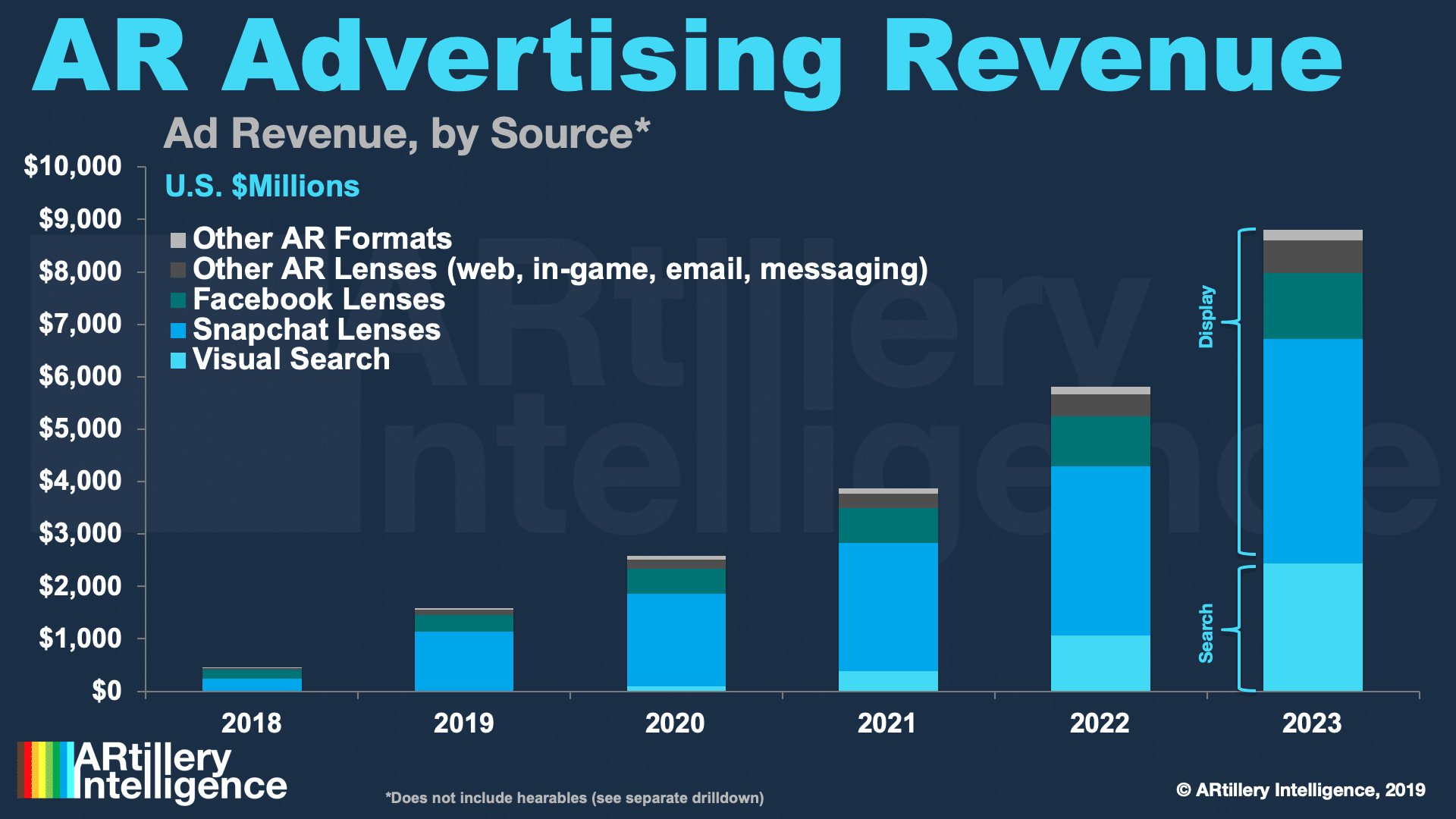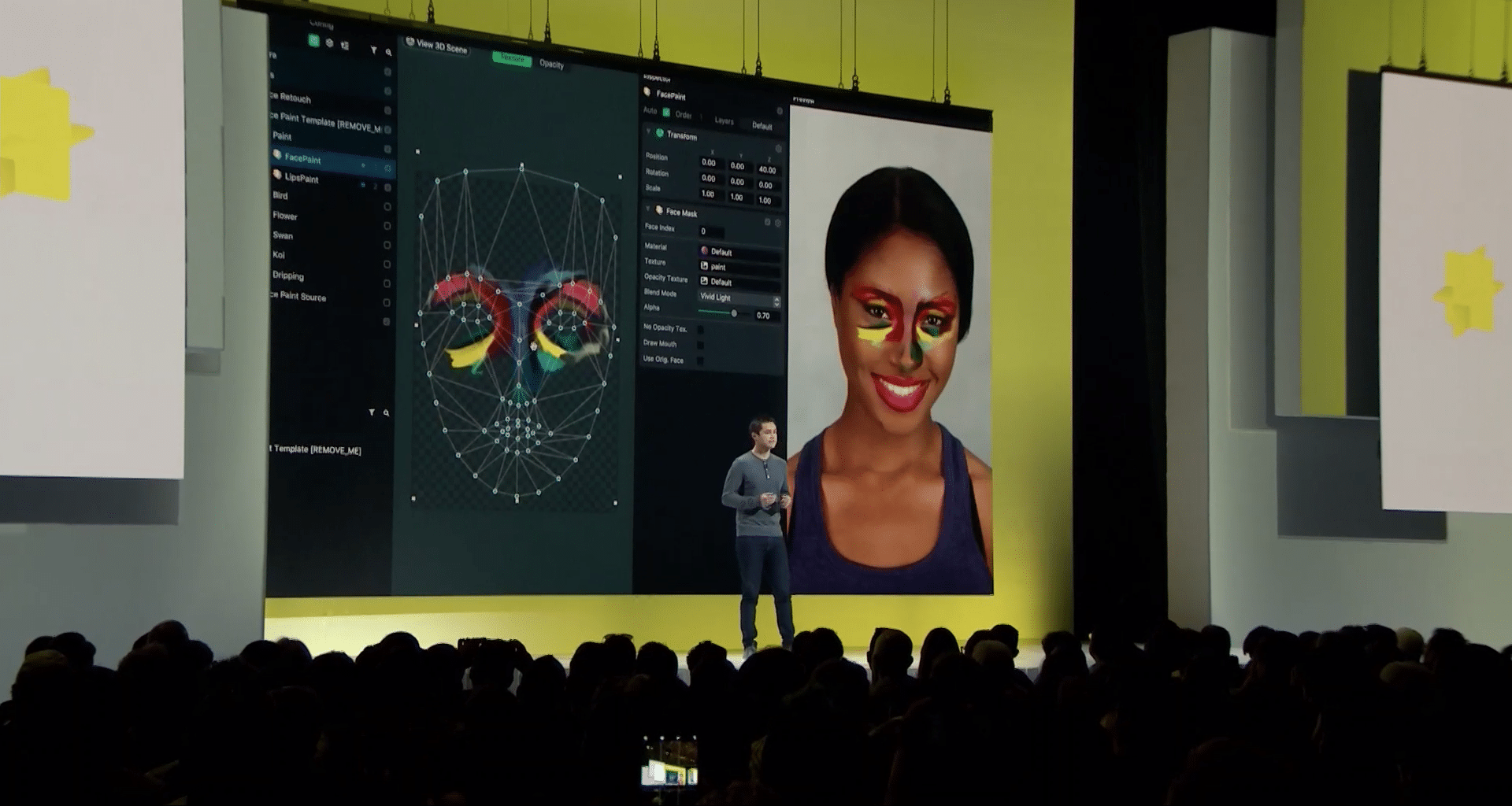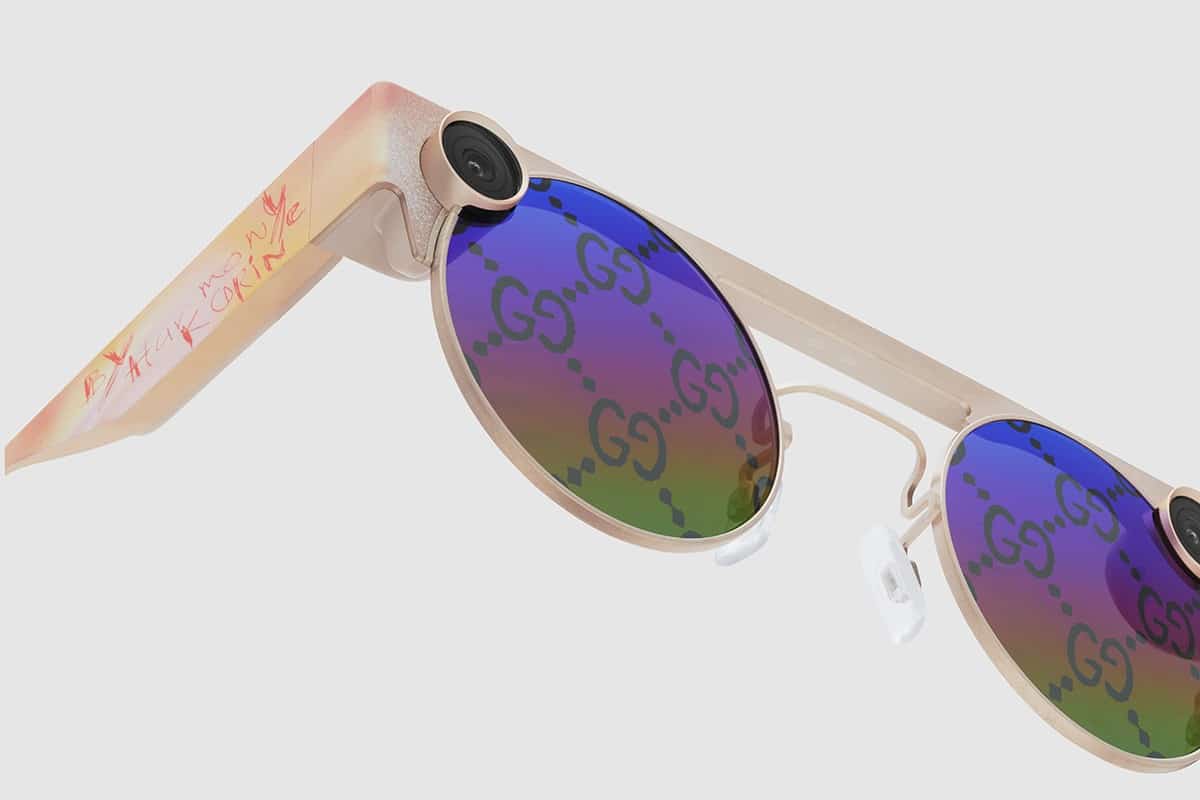
This post is adapted from ARtillery Intelligence’s report, Lessons From AR Revenue Leaders, Part I: Snap. It includes some of its data and takeaways. More can be previewed here and subscribe for the full report.
A lot can be learned from consumer AR’s early leaders. What are they doing right? How are they engaging users? And how are they making money? These are key questions in AR’s early stages, as there’s no standardized playbook quite yet. This results in lots of experimentation.
This exercise includes pinpointing fitting AR use cases, as well as more granular strategies around user experience (UX). What types of AR interactions resonate with consumers? And what best practices are being standardized for experience and interface design?
Equally important is the question of AR monetization and revenue models. Just as user experience is being refined, questions over what consumers will and won’t pay for are likewise being discovered. The same goes for brand spending behavior for sponsored AR experiences.
Snap is one company leading the way with all of the above. It has built a real revenue-generating business around AR lenses, including brand-sponsored experiences. A lot of this comes down to a virtuous cycle: user engagement attracts lens developers, more users… then advertisers.

Camera Marketing
Picking up where we left off last week in examining Snapchat’s lens strategy, one key component is distribution. Though Snapchat is a walled garden, it’s a sizeable one. It’s also gotten good at targeting audience profiles, developed from its tenure as a brand advertising powerhouse.
Paid/sponsored lenses are afforded greater reach than community lenses… but for a price. This is Snapchat’s AR offering to brand advertisers, and currently the leading form of AR advertising revenue, as we’ve examined. This is what Snap has begun to call “camera marketing.”
“While the last ten years have been about social media marketing the next ten years are going to be about this new thing called camera marketing,” said Snap’s Carolina Arguelles on stage at AWE Europe. “It’s fragmented out there [and] hard to capture peoples’ attention in a lean-back environment. But when you’re distributing ads through the camera, you’re guaranteeing engagement. You’re guaranteeing someone being leaned in.”
Snap has also put emphasis on making ad buying and measurement frictionless — something it’s learned through its tenure in digital advertising. This takes its user-facing strategy for making AR easy and accessible — what we like to call “training wheels” — and applies it to advertisers.
“Creators can make [lenses] on behalf of brands that upload it right into their ad stack,” said Arguelles. “Right from their same ad-buying tools where they’re paying to promote their video ads, they can pay to promote their lens and have it appear directly in our carousel…We’re able to do that and guarantee camera distribution for AR because the camera is used so much on the platform.”

Reach Driven
The volume of camera use Arguelles cites gives Snapchat an edge in AR ads. This allows it to segment audiences subsets which are still of meaningful scale to reach-driven brand advertisers. It also cultivates AR’s capacity for “upper-funnel” reach, and “lower-funnel” response.
“We should really remove any preconceived notions of AR for brands as one where [consumers] are trialing the exact beauty shade and then buying it. Or the furniture, and then buying it,” said Arguelles. It’s great for that, but it can also be great for upper-funnel. AR can be throughout the funnel. It all depends on how you’re targeting your ad, what the creative looks like and ultimately what the brand wants.”
Speaking of scale, all of the above lessons are validated by a large sample. Due to the audience sizes Snapchat can reach with engaged AR users, these lessons can be relevant and applicable to anyone developing AR products, or any brands devising ways to engage customers.
“We’ve actually aired tens of thousands of AR campaigns,” said Arguelles.” We’re not experimenting or [asking] ‘Does AR marketing work?’ We’re iterating on how it’s most effective for consumer packaged goods vs. retail versus automotive [and] how it works for awareness upper-funnel [advertising] or for conversion lifts. That’s the volume of what we’ve been able to do on the platform.”

Long-Term Vision
Lastly, all of the above represents today’s market that Snap is building for. But it also has its eye on AR’s face-worn future. That’s where Spectacles come in. Though they aren’t AR glasses, they’re acclimating the world to wearable tech and, more importantly, collecting demand signals.
“We believe that in order to envision this future of computing overlaid on the world, you really need to take the screen away that’s cutting you off from the actual physical world, which the mobile phone does.” Said Arguelles. “Our investment in Spectacles is because we want to test, iterate and understand what it means to interact with cameras when they’re on your face. We want to know what good content is… How people interact with it… What they like… What should the UX be? … What should the creative experiences be? … And ultimately how can we start to build out a content repository? … AR is just starting to be introduced into this product and is eventually something that you’ll see more and more of.”
Check out the full report here.





